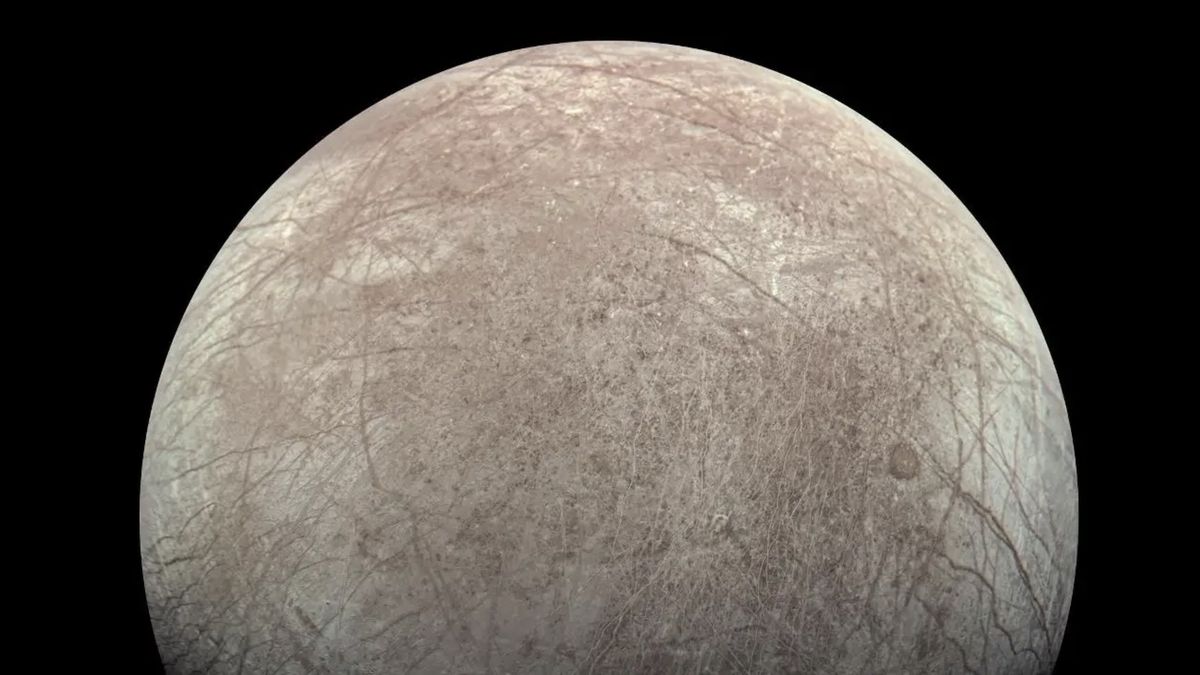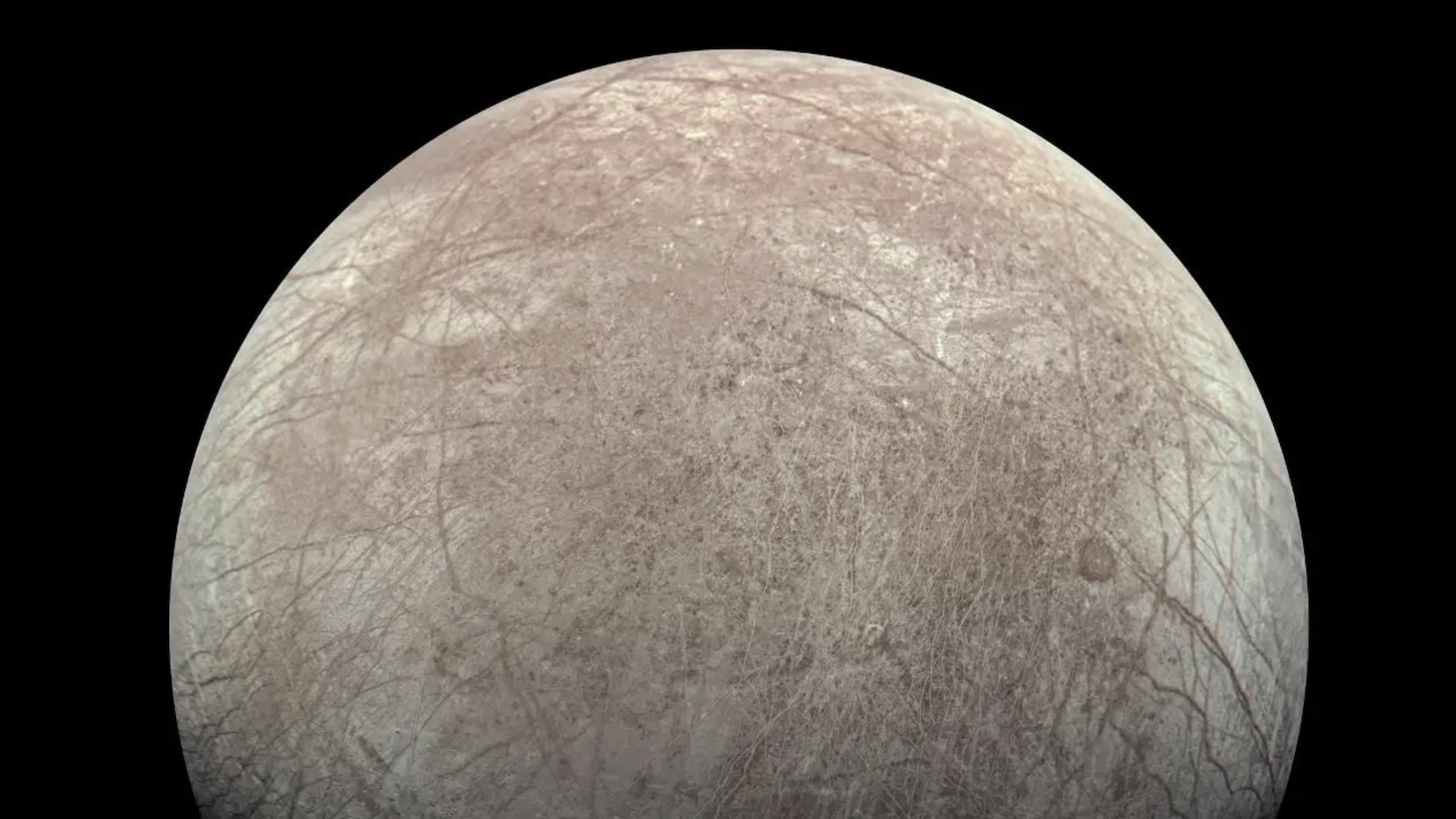Now Reading: James Webb Telescope Detects Unusual Activity on Europa, Jupiter’s Icy Moon
-
01
James Webb Telescope Detects Unusual Activity on Europa, Jupiter’s Icy Moon
James Webb Telescope Detects Unusual Activity on Europa, Jupiter’s Icy Moon

### Fast summary
– Recent studies utilizing the James Webb Space Telescope (JWST) reveal Europa, one of Jupiter’s moons, has a constantly changing icy surface.
– Europa’s surface shows evidence of both amorphous ice and crystalline ice, suggesting an active subsurface ocean beneath its icy shell.- Geologic processes likely bring subsurface materials, including CO2 and sodium chloride, to the surface through cracks and chaotic terrain like Tara Regio.
– Charged particles from Jupiter’s magnetic field continually bombard Europa’s surface, altering crystalline ice into amorphous ice within weeks in some regions.
– Heat generated by tidal forces and radioactive decay in europa’s interior warms the subsurface ocean and drives water movement to the surface via processes like plumes or diapirs.
– The presence of unusual isotopes in CO2 strengthens hypotheses about these materials originating from Europa’s internal ocean.
– Observations indicate that resurfacing events on Europa occur rapidly but are equally short-lived due to constant radiation exposure.
*Image:*

*Caption:* *Europa’s constantly changing icy surface as revealed by James Webb Space Telescope data.* *(Credit: NASA/JPL-Caltech/SwRI/MSSS; Image processing: Kevin M. Gill CC BY 3.0)*
—
### Indian Opinion analysis
The JWST findings add compelling evidence that Europa hosts a subsurface liquid water ocean that interacts with its outer icy layers-a finding bearing significant scientific importance for planetary science and astrobiology. The evidence for geologic activity suggests dynamic internal mechanisms akin to Earth-like tectonic processes on a far more extreme scale.
For India’s growing space science efforts under ISRO (Indian Space Research Organisation),missions investigating extraterrestrial life or geomorphological changes could draw inspiration from such studies.India’s Aditya-L1 solar mission has already demonstrated capacity for detailed space analysis closer to home; future extraplanetary missions could build upon international collaborations or prioritize unique regional contributions.
Additionally, this research underscores how scientific advancements depend on sophisticated telescopic technologies like JWST-offering insights into strategic avenues for India’s future investment in advanced space-based observational systems.
[Read More](https://www.livescience.com/space/jupiter/james-webb-telescope-spots-wierd-changes-on-jupiters-icy-moon-europa)
























